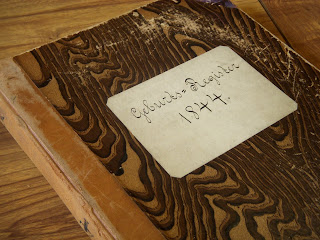
W. Dee Halverson at Heritage Associates, opens doors to the past.
Recently Dee wrote the history of a coal mining community which has now disappeared into the dust.
Recently Dee wrote the history of a coal mining community which has now disappeared into the dust.
"One of the most important tasks of a coal miner's wife was having a tub of water heating on the stove ready for the grimy workman to jump into on his return from a twelve-hour shift."

Lucille Judd, a 93-year-old Grass Creek native recalled, "In Grass Creek there was only one water source for washing, cooking and bathing. We called it the Town Pump. The townspeople would all line up on Saturday with their buckets and tubs to get water for the family's weekly baths. They would be there again on Sunday night to get water for Monday wash day. I think the only place with running water in Grass Creek was Mrs. Buchanan's boarding house."
Grass Creek, Utah is a ghost town, one of many old settlements that have vanished as if by the wave of a magician's wand, leaving only memories to prove they once existed. As fragile as memories are the stories of the people who once lived in these now deserted towns.
Many of today's ghost towns were prosperous mining camps, boom towns built upon silver, gold and even coal. But they might as well have been built upon sand, for they bloomed briefly, then faded and died. Sometimes they were deserted overnight when the miners left to answer the call of rich strikes elsewhere. More often the mines died gradually when their veins pinched out, or when underground water flooded their shafts.
Not many people alive today can remember Grass Creek when hundreds of miners, speaking a dozen different languages, made their way up the six-mile canyon. Or when schools, boarding houses, saloons and homes crowded streets, and picnics, dances and daily chores crowded lives. But no matter its size or how long its life, historic towns like Grass, Creek, Utah should be remembered—if only as places where people lived, loved and died.
Is there a door to your past that needs opening? Heritage Associates has the key! Contact us in South Jordan, Utah, at 801-532-2561, or wdhalverson@heritageassociates.com



























